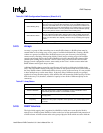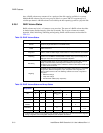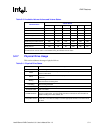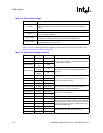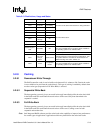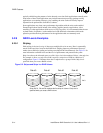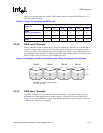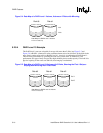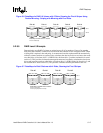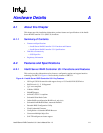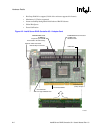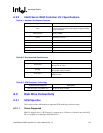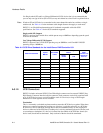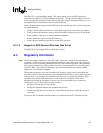
Intel® Server RAID Controller U3-1 User’s Manual Rev 1.0 5-17
RAID Features
Figure 5-6. Data Map of a RAID 10 Volume with 5 Disks, Showing the First 4 Stripes Using
Double Mirroring - Striping with Mirroring with Four Disks
5.2.9.5 RAID Level 5 Example
Data and parity on a RAID 5 volume are striped across all of its members. If one of its member
disks fails, then a RAID 5 volume does not lose data and continues to run in degraded mode. When
a failing disk is replaced, data and parity is reconstructed onto the replacement disk automatically
while the volume continues to operate. Parity calculates the data in two drives and stores the result
on a third drive (a bit from drive 1 is XOR'd with a bit from drive 2, and the resultant bit is stored
on drive 3). This provides a balance between performance and cost.Parity calculates the data in two
drives and stores the result on a third drive (a bit from drive 1 is XOR'd with a bit from drive 2, and
the resultant bit is stored on drive 3). This provides a balance between performance and cost.
Figure 5-7. Data Map of a Raid 5 Volume with 4 Disks, Showing the First 5 Stripes
Data Map of a RAID Level 10 Volume
Di is the i'th data strip
Disk #0 Disk #1 Disk #2 Disk #3
Vol 1
Vol 0
D7
D5
D2
D0
D8
D5
D3
D0
D8
D6
D3
D1
D9
D6
D4
D1
Disk #4
D9
D7
D4
D2
Data Map of a RAID Level 5 Volume
Di is the i'th data strip
Pi is the parity strip for the i'th stripe
Disk #0 Disk #1 Disk #2
Vol 1
Vol 0
D12
P3
D6
D3
D0
D13
D9
P2
D4
D1
D14
D10
D7
P1
D2
Disk #3
P4
D11
D8
D5
P0



